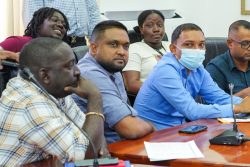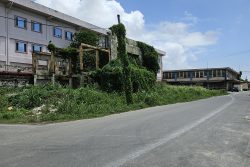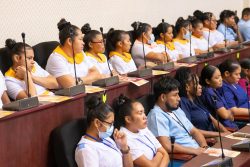By Collin M. Constantine and Saieed I. Khalil
The persistence of pioneering oil exploration companies in continuing drilling activities off the Guyana coast has served as an indicator that this tiny nation on the North East shoulder of South America may very well be on the cusp of a major oil find. Guyana’s geographical neighbourhood makes that a distinct possibility – its neighbour to the west, Venezuela, is an OPEC powerhouse; Suriname to the East already has a vibrant oil sector; and in its southern backyard, Brazil has recorded huge oil discoveries. Of significance are reports from the United States Geological Survey that the Guyana Suriname basin has been identified as having “the second highest resource potential among unexplored oil basins in the world and estimates mean recoverable oil reserves over 13.6 billion bbls and gas reserves of 39 trillion cubic ft.”
Already, plans are in train to deal with this eventuality. Following the election of President Donald Ramotar in November of 2011, a brand new Ministry of Natural Resources and the Environ-ment, which consolidates all the country’s natural resources and environmental agencies, was established.
At the same time commentators tout the potential benefits of anoil find; other observers are more wary and point to the need for an effective sociopolitical structure that will properly manage the windfall proceeds.
Indeed, while the presence of great mineral reserves has been a boon for many developing countries namely Chile, Indonesia and Botswana, it has brought conflict, corruption and economic stagnation to Angola, Sudan and even Saudi Arabia. What is it though that makes one mineral resource producer a baron and the other a basket case?
Many economists examine this gap through an analytical prism they call the “Natural Resource Curse”. They had identified differences in institutions of governance, conflict management and the like as reasons why some countries are better able to reap the economic benefits of their natural resource wealth. Studies have shown that resource rich countries are markedly vulnerable to volatile commodity world prices and suffer tremendous foreign exchange losses and long periods of economic decline- this has been the origin of the natural resource curse argument.
When the economic rents of natural resources are sufficiently high however, or are expected to be temporary, incentives for political agents to siphon off rents to friends and personal bank accounts increase, and great socio-political conflicts emerge (civil war in many African nations) when institutions of governance are weak. Further, large swings in the labour market towards and away from the resource and manufacturing sectors respectively, cause the latter to decline in terms of employment, income and output (known as the Dutch Disease), which cements resource specialization and reinforces a nations’ exposure to fluctuating commodity world prices.
Unfortunately, Guyana’s major exports had remained the same pre and post-independence and thus, illustrate a significant dependence on resource exports for foreign earnings. The economy has undergone little structural change (a shift from low value/productivity sectors to higher value ones) and there’s evidence to suggest that it’s handicapped by the resource curse and the Dutch Disease. It was during the mid-70s and early 80s that the bauxite and sugar industries benefited from the surge in world prices and the local manufacturing sector suffered. A similar phenomenon occurred as these prices headed on a steady decline and the gold price on an upward trend in the early 90s and in the second decade in the new millennium (2007). Gold is now as was the case in the mid-70s and early 80s with the sugar and bauxite industries, the single largest contributor of export earnings. Of course, one could account little structural change in Guyana on the pitfalls of its historical political climate, large scale migration of both skilled and unskilled labour, the institutions that were erected by the colonialists and a socialist period that absorbed much of Guyana’s economic activity, which could have stalled any attempt of structural transformation over Guyana’s short history.
It is because of these that emphasis should be placed on strengthening and where necessary erecting institutional architecture that would encourage transparency and public accountability to retard the resource curse and to guard against the Dutch Disease. Even as the government prepares for the highly anticipated oil discovery, improving its governance framework must be part and parcel of the sectors’ development, to insure against any civic fallout as rhetoric emerges as to the usage of the oil money.
(Collin M. Constantine and Saieed Khalil are members of the University of Guyana Economic Society and fourth and third year economics students, respectively, at the University of Guyana. The views expressed in this article are solely theirs.)








